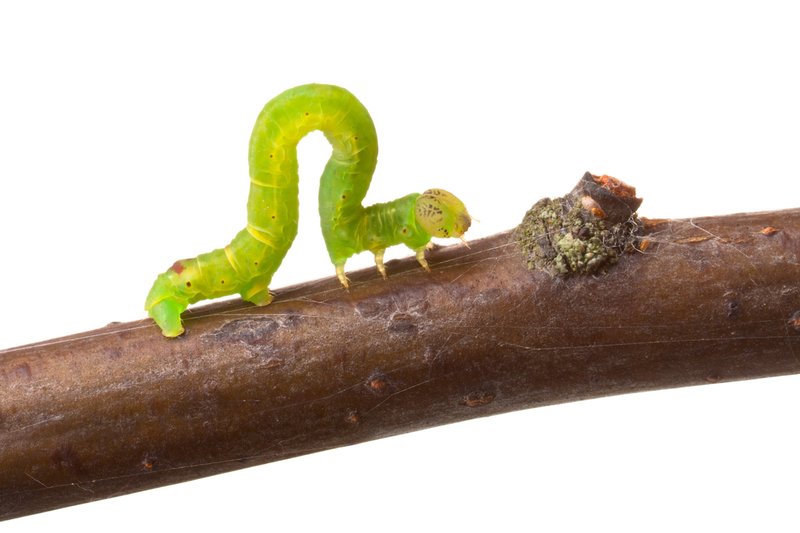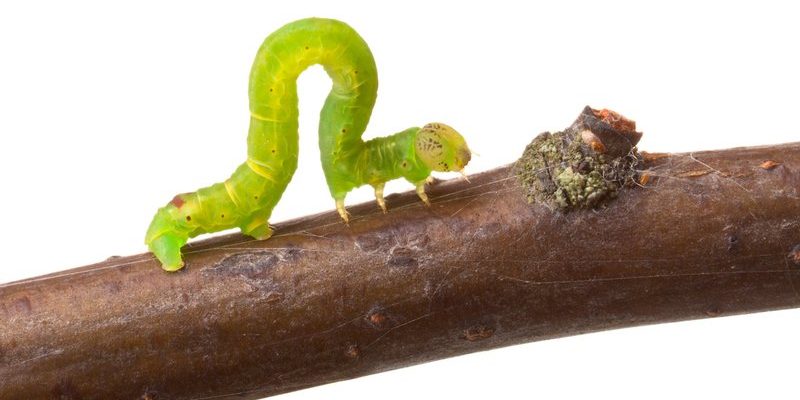
When we talk about **inchworm activity across different elevations**, we’re diving into an exploration of their behaviors, habitats, and how altitude influences their lives. Imagine sipping coffee while discussing how these tiny critters are affected by the lush valleys or the high mountain peaks. It’s fascinating to consider how elevation can impact everything from their feeding habits to how they evade predators.
So, if you’re ready, let’s unravel the world of **inchworms** and see how their lives unfold at various altitudes!
What Are Inchworms?
Inchworms, also known as **measuring worms** or **loopers**, are the larvae of moths from the Geometridae family. You might not realize it, but these tiny creatures can be found almost everywhere – from your backyard to the wildest forests. They got the name “inchworm” because of their unique way of moving. Instead of crawling like many other caterpillars, inchworms literally “measure” the distance they travel by creating a looping motion with their bodies.
Imagine them inching along a branch, stretching out and then pulling their back end forward. It’s a slow but effective way to navigate their surroundings. This unique movement helps them blend into their environment, making it hard for predators to spot them. They’re like little ninjas in the plant world, stealthily making their way through leaves and twigs!
While they may look like simple larvae, inchworms are more than meets the eye. They play a vital role in the ecosystem as herbivores, helping to keep plant life in check. And when they eventually transform into moths, they become part of the food chain in another exciting way.
How Elevation Affects Inchworm Habitats
Elevation significantly shapes the habitats of inchworms. As you climb higher into the mountains, you’ll encounter different vegetation and weather conditions. This can influence which species of inchworms thrive in those areas. For example, in lower elevations, where the climate is often warmer and wetter, you might find a variety of **inchworm species** enjoying the lush foliage.
As you venture upward, however, the environment changes. The air gets thinner, temperatures drop, and food sources become more limited. Inchworms in these high-altitude areas adapt by becoming more resilient. They might develop slower growth rates or even different dietary preferences to survive. It’s like climbing a mountain yourself: you need to pack differently and prepare for a new set of challenges!
Each elevation presents unique challenges and adaptations. The higher you go, the more you realize that inchworms are more than just cute little critters; they are survivors, clever and adaptable in ways that keep them thriving, even under pressure.
Inchworm Behavior Across Different Elevations
When we observe inchworm behavior at various elevations, we can see some intriguing differences. At lower altitudes, inchworms are generally more active. Warmer temperatures and abundant food sources mean these little guys can munch on leaves and grow faster. You might spot them hanging out on tree branches, taking advantage of the lush surroundings.
As elevation increases, however, things change. Inchworms become less active due to cooler temperatures. They often adopt a more sedentary lifestyle to conserve energy. You won’t see them out and about as much because they have to be more cautious about their food sources. It’s like they’re hitting the snooze button on their day-to-day activities, waiting for more favorable conditions to continue their growth.
In terms of their movement, inchworms at higher elevations may also exhibit different behaviors to avoid predation. For instance, they might stay closer to the ground or try to blend in with the bark of trees, making them harder to spot. In contrast, those at lower elevations might take more risks, munching on readily available foliage without as much concern for predators.
Feeding Habits: What Do Inchworms Eat at Different Altitudes?
Feeding habits are another fascinating aspect of inchworm life that changes with elevation. At lower altitudes, where vegetation is rich and diverse, inchworms feast on a wide variety of leaves. Their diet may include plants like oak, maple, and even some fruit trees. This abundance of food allows them to grow quickly and thrive.
But as you climb higher, food choices dwindle. Inchworms must adjust their diets based on the available plants in their environment. At these higher elevations, you might find them munching on tougher, more resilient leaves that can withstand harsher weather. While they might not have as many options, clever inchworms still manage to find what they need to survive and grow.
This shift in diet also reflects the adaptability of inchworms. They’re like chefs adjusting their recipes based on the ingredients at hand. If the perfect leaf isn’t available, they’ll find a way to make a delightful dish with what’s left.
Predation: Survival Tactics at Varying Elevations
Surviving in different environments also means facing different predators. At lower elevations, inchworms must contend with a range of hungry animals, including birds, insects, and even small mammals. Their stealthy movements and ability to camouflage help them evade these threats. It’s a bit like playing hide and seek in a dense forest where the stakes are high.
As you move to higher elevations, the types of predators might change, but the challenge remains. Birds may still be a significant threat, but smaller predators like insects can also pose risks. Inchworms in this environment have to be extra cautious. Some may even develop behaviors like dropping to the ground if they feel threatened, relying on their natural camouflage to blend in with the rocky terrain.
These survival tactics exhibit the remarkable adaptability of inchworms. They remind us that, regardless of the environment, every creature finds a way to navigate the challenges it faces.
The Life Cycle of Inchworms and Elevation Influence
The life cycle of inchworms is another area where elevation plays a critical role. Inchworms typically undergo four stages: egg, larva (the inchworm), pupa, and adult moth. The duration of these stages can vary significantly depending on the elevation.
At lower elevations, where temperatures are warmer, inchworms can develop faster. They might transition from egg to larva to adult in just a few weeks. This rapid development means they can reproduce quickly, leading to larger populations.
Conversely, at higher elevations, the cooler temperatures slow down their development. It can take much longer for inchworms to mature into adults, sometimes extending into months. This longer life cycle results in fewer generations in a given year, which can affect their overall population dynamics.
Understanding how elevation influences these cycles is essential for conservation efforts. These insights help us appreciate the intricate relationships between inchworms, their environments, and the larger ecosystems they inhabit.
Final Thoughts on Inchworm Activity Across Different Elevations
In summary, inchworms are incredible little creatures that showcase nature’s adaptability across various elevations. Whether they’re inching along lush valley branches or navigating rocky mountain crevices, these critters have developed unique behaviors and survival strategies tailored to their environments. It’s a testament to the resilience of nature.
So next time you see an inchworm, take a moment to appreciate its journey. From its diet to its movement, every little detail is a reflection of its ability to adapt and thrive. As we continue to explore the behaviors of different species in various altitudes, we can better understand the balance that keeps our ecosystems flourishing.
These little inching wonders are more than just cute larvae; they are vital players in the complex web of life that makes our world so fascinating.

